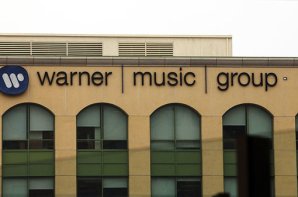The Music Modernization Act (MMA) has been scheduled for a vote in the House Judiciary Committee on April 9th, where it’s expected to pass with bipartisan support, committee chairman Bob Goodlatte’s (R-Va.) office confirmed Wednesday.
Still to be determined is whether it will go to the House floor as a standalone bill, or gets bundled into a package of music-related measures, including the CLASSICS Act, and the Allocation for Music Producers (AMP) Act. Either way, the MMA stands to be the most significant piece of legislation affecting music licensing in a generation.
 “It’s also the only significant piece of legislation affecting music licensing in a generation,” quipped National Music Publishers Association CEO David Israelite during a panel discussion on Capitol Hill this week on music licensing issues.
“It’s also the only significant piece of legislation affecting music licensing in a generation,” quipped National Music Publishers Association CEO David Israelite during a panel discussion on Capitol Hill this week on music licensing issues.
In addition to being a rare example these days of genuine bipartisanship in congress, the MMA has proved an even more rare example of consensus among nearly all the (frequently warring) institutional voices within the music industry, including organizations representing digital service providers, publishers, songwriters, and record labels.
The bill is aimed at solving an enduring problem within the music industry that has grown more acute with the rise of streaming as the dominate mode of distribution for sound recordings: uncertainty and inefficiency in licensing mechanical reproduction rights for musical compositions.
Under U.S. copyright law, songs are subject to a compulsory mechanical license. Once a song is published, anyone can record it by notifying the songwriter or representative of their intent and paying the statutory royalty set by the Copyright Royalty Board. Unlike the performance right for songs, however, where a venue or service provider can obtain blanket licenses from ASCAP, BMI, SESAC, and GRD for their entire catalogs of works, covering nearly every song published in the U.S., and unlike other major territories, there is currently no blanket licensing facility here for mechanical rights. Instead, a service provider like Spotify or Apple Music, with upwards of 30 million or more sound recordings in their libraries, must locate, notify, and pay the songwriters or administrators for each of those recordings individually, many of which have complex, and often opaque fractional ownership structures.
Alleged failures to correctly locate and pay the appropriate rights owners have led to a raft of litigation against service providers for copyright infringement, including the $1.6 billion lawsuit currently pending against Spotify brought by Wixen Music Publishing.
The MMA would address that problem by creating a blanket license for mechanical rights and creating a new entity, selected by the Copyright Office, to administer it. Instead of having to pay each songwriters individually, service providers could write one check to the new entity, which would assume the burden of locating and paying the appropriate rights owners. The costs of operating the new entity would be paid by service providers, eliminating the need for the new entity to charge a commission to songwriters.
Songwriters and publishers would gain greater certainty of being paid, while service providers would be relieved of an enormous administrative burden and protected against the risk of litigation.
It is that alignment of interests that has led to the broad consensus in support of the MMA within the industry. But the MMA’s most important contribution could be to prove the case for open data and open protocols.
In addition to administering the blanket mechanical license, the new licensing entity envisioned by the MMA would, for the first time, create an open, publicly available database matching sound recordings to musical compositions and their authors and owners.
“We’re really changing the paradigm on data,” said NMPA’s Israelite, one of the MMA’s main architects. “Throughout the history of the music business databases have been regarded as proprietary. ..We want to encourage competition.”
By making critical ownership data public, MMA’s backers hope, entrepreneurs will be able to develop new applications and services beyond the current crop of streaming services, bringing new investment and new revenue into the music business.
“I don’t think streaming is the be-all and end-all in terms of business models,” Panos Panay, VP for innovation and strategy at Berklee College of Music and a leader of the Open Music Initiative, said during the same panel discussion. OMI is working to develop open protocols for the exchange of music rights data, which could achieve some of the same effects as the proposed MMA database.
“With open protocols you can build an ecosystem, you can have innovation” Panay said. “The MMA, hopefully, will let this industry finally move beyond its past. If we get this right, we won’t have to stop at streaming. All sorts of new applications could be developed to create all sorts of new revenue streams.”
If that pans out, it could provide a valuable proof of concept for other rights based industries. An open and verified database of authenticity and provenance for images and artworks, for instance, could help unlock new licensing and e-commerce opportunities that are today held back by high levels of uncertainty and fraud.
Likewise, the lack of an open, comprehensive database of rights to published works makes it difficult for would-be developers to learn what works are available for license in which territories, holding back the creation of potentially new, digital applications and revenue streams for authors and publishers.
Much will depend on how well the new music rights database is maintained. There are companies in the market today, such as Music Reports and Loudr, that have already compiled comprehensive databases matching sound recordings to compositions and their rights owners, and they invest significant money and effort to verify the data and keep it current. Whether the administrators of the new open, non-proprietary database will have the same incentive to maintain it at a high level of accuracy and currency remains to be seen.
“Everyone will benefit from having this, and everyone is hurt by not having it,” Panay said of envisioned new database. “I think the important thing is that puts a focus on the data, and the importance of good data.”

 Apart from trading Bitcoin, just about the hottest application running on a blockchain at the moment is
Apart from trading Bitcoin, just about the hottest application running on a blockchain at the moment is  In undertaking their own effort, with no clear indication of how widely any resulting database would be shared with other industry stakeholders, ASCAP, SACEM, and PRS, will be working outside two other major multi-stakeholder blockchain-related data initiatives, to say nothing of the growing number of smaller efforts being bootstrapped by entrepreneurs.
In undertaking their own effort, with no clear indication of how widely any resulting database would be shared with other industry stakeholders, ASCAP, SACEM, and PRS, will be working outside two other major multi-stakeholder blockchain-related data initiatives, to say nothing of the growing number of smaller efforts being bootstrapped by entrepreneurs.
 The much-derided phenomenon of unlicensed “sharing” of music over P2P networks also carries echoes of music’s past. Until the Gramophone and the Phonograph made private performances of music practical, music was almost always shared, in the sense that it was usually experienced as part of a public performance. While the industrial technologies of recording and playback made private performances lucrative the instinct to share music never really went away.
The much-derided phenomenon of unlicensed “sharing” of music over P2P networks also carries echoes of music’s past. Until the Gramophone and the Phonograph made private performances of music practical, music was almost always shared, in the sense that it was usually experienced as part of a public performance. While the industrial technologies of recording and playback made private performances lucrative the instinct to share music never really went away.


 It’s hard to tell whether Apple is simply trolling Spotify with its
It’s hard to tell whether Apple is simply trolling Spotify with its 